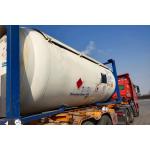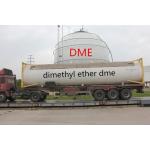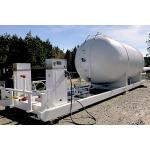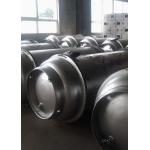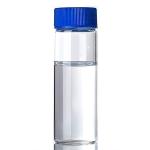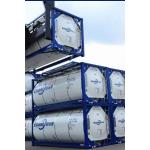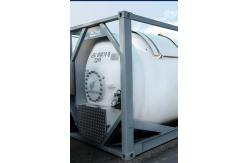Product Introduction
Methoxymethane (DME), commonly known as methyl ethre (CH3OCH3), is
the simplest fatty and an important downstream product of methanol.
As a clean chemical, Methoxymethane has many unique uses in the
synthesis of pharmaceuticals, fuels, pesticides, and chemicals. It
is an important chemical raw material and can be used as a
propellant, refrigerant, and foaming agent for aerosols; high
concentrations of Methoxymethane can be used as an anesthetic; it
can also replace LPG and diesel as a new fuel. The main use of ddme
at present is as a propellant for aerosols. Many foreign countries
are developing Methoxymethane to replace chlorofluorocarbons as a
refrigerant and foaming agent; developing and utilizing as a
foaming agent for polyethylene, polyurethane, and thermoplastic
polyester foams. A mixture of Methoxymethane and methanol in a
certain proportion is an ideal liquid fuel and can be used as a
substitute for city gas and liquefied gas. dme can also be used as
a gasoline additive to produce unleaded gasoline. Therefore, the
research on the production method and application field of it has
become a development topic that is highly valued at home and
abroad. The sources of dme raw materials are also very wide. It can
be produced from petroleum, natural gas, coal and biomass (such as
rice straw, sorghum stalks, rice bran and other organic
substances).
Production methods and progress
DME was first produced by distillation of by-products in
high-pressure methanol production. With the advancement of methanol
synthesis technology, industrial production technologies for
methanol dehydration and synthesis gas synthesis have developed
rapidly. According to different reactors, synthesis gas synthesis
of DME is divided into two forms: fixed bed reactor and slurry bed
reactor. For many synthetic process routes, there are advantages
and disadvantages to varying degrees. We should accept its
advantages, improve its shortcomings, and use it better and more
effectively in industrial production. `1.1 Methanol liquid phase
dehydration method The traditional DME production method is to use
methanol as raw material, and generate methyl sulfate under the
catalytic action of concentrated sulfuric acid, and methyl hydrogen
sulfate reacts with methanol to generate DME. Methanol dehydration
to DME first used concentrated sulfuric acid as a catalyst, and the
reaction was carried out in the liquid phase, while generating
by-products such as CO, CO2, H2, CH2, and C2H2. It is reported that
the dehydration catalytic reaction of methanol in liquid mixed acid
[sulfuric acid (93%-98%) and phosphoric acid (85%)1 will change the
azeotropic phenomenon of single sulfuric acid dehydration
catalysis, so that water can be removed evenly and production can
be carried out continuously, thus solving the problems of difficult
removal of reaction water and serious carbonization. The improved
method of methanol liquid phase dehydration to produce DME has the
characteristics of low reaction temperature, high conversion rate,
high selectivity, low equipment corrosion, low pollution, short
production process, low equipment investment and low production
cost.
Specification Parameters (Technical Data Table)
Property | Specification |
Product Name | DME |
Key Words | Methoxymethane |
Chemical Formula | C2H6O,CH3OCH3 |
Appearance | Colorless gas or compressed liquid at room temperature, with a
chloroform-like odor |
Density | Liquid phase: 661 kg/m³; Gas phase: 1.617 kg/m³ (at 20°C, air = 1) |
Purity | ≥99.99% |
Melting Point | -141.5°C |
Boiling Point | -24.9°C |
Flash Point (Closed Cup) | -41°C |
Surface Tension | 16 dyne/cm (-10°C) |
Gas Viscosity | 82.5 μP (0°C) |
Heat of Vaporization | 111.64 cal/g (-24.8°C) |
Heat of Combustion | 7545 cal/g |
Specific Heat | 0.5351 cal/g·°C |
Critical Pressure | 5.37 MPa |
Critical Temperature | 126.9°C |
Heat Value of Liquid DME | 6903 * 4.1868 J/kg |
Heat Value of Gaseous DME | 14200 * 4.1868 J/kg |
Packaging | 50kg/100kg cylinders or ISO tanks |
Introduction
DME is an organic compound with a chemical formula of
C2H6O. It is a homologue of methyl ethre and has the
characteristics of being colorless, flammable and gaseous. Due to
its excellent physical and chemical properties, DME has a wide
range of application prospects in modern industry. This article
will discuss in detail the uses, properties and production
methods .
Physical and chemical properties
DME is a colorless gas with a slight aroma at room
temperature and pressure. Its boiling point is -24.9℃, melting
point is -141.5℃, and density is 1.59 kg/m³. IT has a polar
molecular structure and low solubility, but it is miscible with
most organic solvents. Its chemical properties are relatively
stable and it is not easy to react with acids and alkalis, but it
can undergo combustion and oxidation reactions at high temperatures
or in the presence of catalysts to produce carbon dioxide and
water.
Production method
Methanol dehydration method
Methanol dehydration method is one of the main methods for
producing . This method uses methanol to undergo a dehydration
reaction under the action of a catalyst (such as γ-alumina, ion
exchange resin, etc.) to produce DME. The reaction equation is:
2CH3OH → CH3OCH3 + H2O. This method has a simple process and low
cost, and is currently the mainstream technology for industrial
production of DME.
Synthesis gas production method
The synthesis gas production method uses synthesis gas (a mixture
of CO and H2) as a raw material to prepare DME through a one-step
or two-step method. The one-step method refers to the direct
generation of DME from synthesis gas under the action of a
catalyst, and the reaction equation is: 2CO + 4H2 → CH3OCH3 + H2O.
The two-stage method refers to first converting synthesis gas into
methanol, and then dehydrating methanol to produce dimethyl ethre.
This method has the advantages of a wide range of raw material
sources and high production efficiency.
Market prospects of DME
With the growth of global energy demand and the improvement of
environmental protection awareness, DME, as a clean energy and
important chemical raw material, has shown a rapid growth trend in
market demand. Especially in China, the dimethyl
ethre industry has received strong support from the government
and has huge market potential in the future. With the continuous
improvement of production technology and the continuous expansion
of application fields, the economic and social benefits of dimethyl
ethre will be further improved.
Conclusion
Due to its unique physical and chemical properties, dimethyl
ethre has a wide range of applications in fuel, refrigerant,
foaming agent and chemical raw materials. Methanol dehydration
method and synthesis gas preparation method are the main production
methods, and DME has broad market prospects. In the future, with
the continuous advancement of technology and the continuous
expansion of application scope, DME is expected to play a more
important role in modern industry and promote the sustainable
development of economy and environment.
